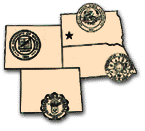Animal Science, Department of

Range Beef Cow Symposium
Date of this Version
December 1991
Document Type
Article
Abstract
Riparian areas are recognized as the green area immediately adjacent to water, such as streams, springs, rivers, ponds, and lakes. They are identified by the presence of vegetation that requires large amounts of water during plant growing seasons (Figure 1). These narrow zones of green vegetation make up only a small proportion of the total area of the lower mountain elevations, foothills, and basin areas of the western United States. They serve as a transition zone between the more plentiful surrounding drier land or (upland) vegetation types and aquatic ecosystems supported by a particular source of water. Because of the availability of water, riparian zones are capable of growing three layers of vegetation; I) trees, ii) shrubs, and iii) herbaceous mixtures. This linear mixture of vegetation provides isolated and unique habitat diversity and increased plant production for livestock, wildlife, fish, and recreation within the western landscape.
Riparian zone habitats function in watersheds: I) by filtering sediment transported from adjoining uplands, ii) by stabilizing stream banks and reducing accelerated erosion, iii) by promoting storage of water for release later in dry seasons and, iv) by recharging near-surface aquifers. These functions are why society today demands riparian zone management be considered important when determining future use of public and private lands.


Comments
Published for Proceedings, The Range Beef Cow Symposium XII December 3, 4 & 5, 1991, Fort Collins, Colorado.